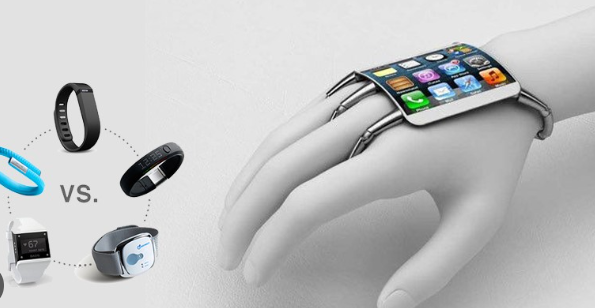Balancing Size & Performance in Wearable Chip Design

The chips in wearable technology are an integral part and play an important role in the performance edge crucial in this world where it all boils down to every centimetre. The more technology integrates into our lives the more we increase the chance of imbalance between size and performance. It emerges from trackers to smartwatches. Thus, the quest for that harmonic connection between the weights and performance is more challenging day by day. Diamond in the Rough is the VLSI design system and chips world where objectives are met through innovation and mastered with the precision required to sculpt the future of wearable technology.
Understanding VLSI design systems
VLSI design systems completely justify the semiconductor engineering being at the top of the hill, where a single chip can be full of millions of transistors – either in connection or separated. To make the process of creating integrated circuits more efficient and productive, complex systems of methods, tools, and techniques supported by design are used. VLSI design tools conduct a whole range of activities covering designing, logic synthesis, placement, routing, etc., which are orchestrated to achieve desirable performance using models tuned to the particular application.
An Evolution story of VLSI technology for wearable devices
The evolution of VLSI compact chips in wearable technology mirrors the relentless march of progress in semiconductor manufacturing. It is mind-blowing to see how VLSI technology, starting from the simple Microcontrollers to now the very advanced System-on-Chip (SoC), is at the centre of the wearable era generation. Current trends like dimensional reduction, gadget enhancement, and dynamic power management have resulted in chips with exceptional integration and efficiency features that were impossible before.
VLSI (Very Large-Scale Integration) chips offer a multitude of features that drive the functionality of these wearable devices. Some of the key features of VLSI chips are:
- Miniaturization:
In the field of wearable technology, miniaturization is without a doubt the centre of attention. The difficulty for chip designers is that they have to squeeze a fairly complete computing ecosystem into the minuteness of a small chip while they cannot compromise on performance. VLSI design systems now dominate this gross process, by using state-of-the-art processing technologies and cutting-edge packaging methods for compact chip manufacture. The outcome of that process together with a new range of wearables that just fade into the background of day-to-day life, but which unbelievably provide functionality just in miniaturized, non-intrusive packages is better than anything else could.
- Power efficiency:
Power efficiency is the main issue of the life of wearable gadgets. In wearables the challenge is not just having plenty of batteries like typical devices that use power from mains or large batteries; it should also scavenge power since these devices operate on limited battery capacities thus means chips that can subside with moderate power should be the order of the day. VLSI design tools excel in this direction by a thorough utilization of a spectrum of methods, for example, dynamic voltage and frequency scaling, as well as a design of low-leakage transistors, to provide low consumption of energy and performance of the system simultaneously. The capability of VLSI chips to well manage the simultaneous facets of power efficiency and performance yields their high importance in the wearable device consumer market.
- High performance
Despite their diminutive size, VLSI chips pack a punch in terms of computational power and performance. This is a testament to the innovations introduced in the design of these monolithic chips, facilitating them to offer consistent high-end processing capabilities, making it possible for wearables to perform complex functions like real-time data processing, AI inference and advanced data fusion without compromising on speed or efficiency.
- Integration of multiple functions
VLSI chips allow the functional linking of different components on a chip as a result of system-on-chip (SoC) architecture. These chips do this by consolidating features such as processors, memory, sensors, and wireless connectivity modules into one platform and the result is a greatly simplified device, energy-efficient and compact. This integration in addition fluidizes the performance while allowing multi-functional wearables within a smaller footprint.
- Customization and flexibility
VLSI chips provide a very high degree of customization and flexibility giving designers the freedom to adjust the particulars of the hardware architecture or functionality of the wearable to be created according to the specific application requirements. Be it sensor integration or various wireless communication protocols, VLSI chips can be customized to suit specifically different wearable devices, thus, they guarantee optimal performance and good user experience.
- Scalability and cost-effectiveness
Scaling is a primary feature of the VLSI chips by principle, and therefore variety of the wearable with variations of their performance and features allow manufacturers to reach different market segments and price levels. Whether it is the cost of entry-level fitness trackers or high-end smartwatches, VLSI chips give an efficient solution for providing much-advanced functionality to consumers while still keeping the price reasonable at the same time.
See also: Exploring Opportunities in the USA for Undergrads
- Seamless connectivity
For wearable devices, this world’s interconnectedness cannot be underestimated. As for communication, this must be uninterrupted. The workings of VLSI chips transcend the use of various types of wireless communication technologies, Bluetooth, Wi-Fi, and NCF, which are all enabled by Internet-of-Things (cellular network enabled), allowing wearables to exchange data in real-time, access cloud services, and interact with other smart devices. This smooth connectivity simply enhances the functionality and adaptability of wearables that are beneficial to consumers, especially in the cases where they go wherever they want to.
In the ubiquitous landscape of wearable tech, finding the sweet spot between size and performance becomes the pin-head here. VLSI design systems and embedded system solution can be considered the crown jewel of the investment in cutting-edge technologies illustrating their innovative nature and accuracy. From form factor and superior performance to low power consumption and effortless connectivity, the revolutionary VLSI chips lead the endless prowl for real-size, smart wearables that intuitively play intrinsic roles we perform daily.







